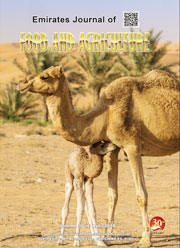EFFECTS OF SILICON ON MAIZE PHOTOSYNTHESIS AND GRAIN YIELD IN BLACK SOILS
DOI:
https://doi.org/10.9755/ejfa.2016-06-730Keywords:
Starch, Chlorophyll fluorescence, Antioxidant enzymes, Dry matter accumulationAbstract
This study aimed at elucidating the role of silicon on photosynthetic parameters, enzymatic activities and yield of maize (Zea mays L.) grown
on the black soils of North Eastern China. The effects of silicon on chlorophyll fluorescence, photosynthetic parameters, non-structural
carbohydrates, antioxidant enzyme activity and grain yield of maize were studied at five different concentrations: 0, 45, 90, 150 and 225
kg· ha-1. Silicon fertilizer boosted the grain yield by increasing photosynthesis and antioxidant enzyme activity. Significant increases in the
maximum quantum yield (Fv/Fm) of photosystem II (PS II), effective quantum efficiency of PS-II (ΦPS-II = Fm’-Fs/Fm’) and photochemical
quenching of PSII (qP) were detected at 225 kg· ha-1 level. No significant differences in intercellular CO2 concentration (Ci) were found at
different silicon levels, indicating that the enhanced photosynthetic rate (Pn) might due to the regulation of combined stomatal and nonstomatal
factors. Increases in total soluble sugar (TSS) and starch were observed, contributing to the synthesis and accumulation of dry
matter. The results showed that silicon enhanced the net photosynthetic rate (Pn) and grain yield in maize by maintaining the integrity of
the photosynthetic machinery as well as increasing pigmentation and absorption of nutrients.










 .
. 